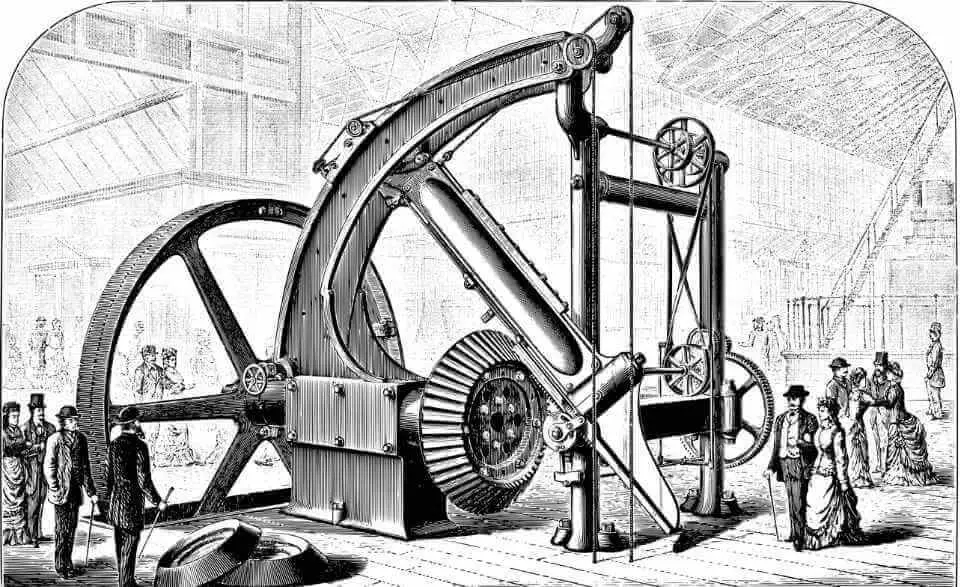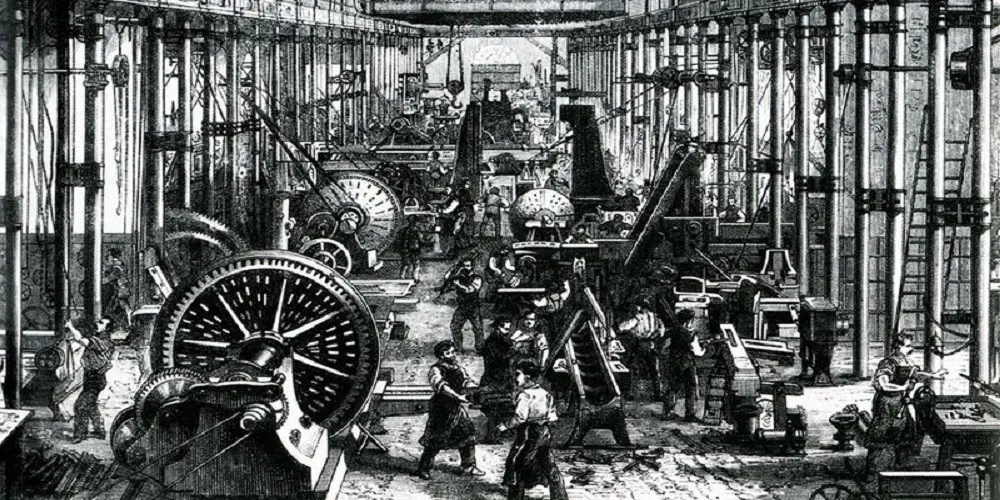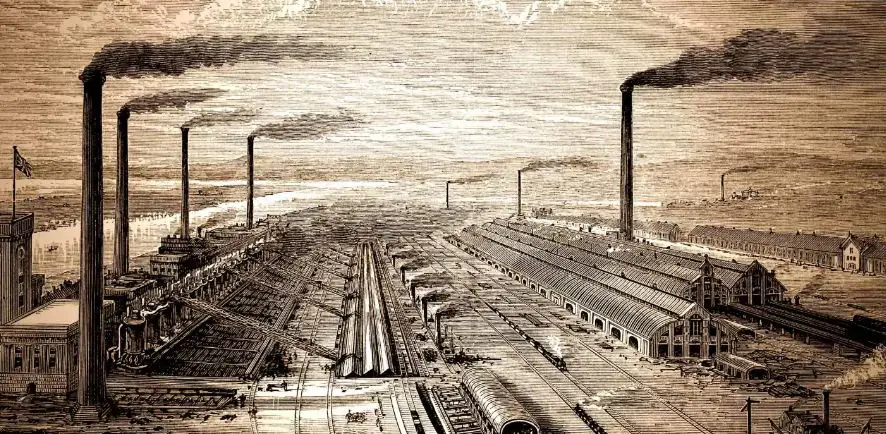How the Industrial Revolution Secretly Changed Everything!

Introduction of Industrial Revolution
The Industrial Revolution, often heralded as one of the most transformative periods in human history, began in the late 18th century and continued through the 19th century, revolutionizing not only the way goods were produced but also the very fabric of society. Originating in Great Britain, this era of rapid industrialization brought about monumental changes that rippled across the globe, laying the foundation for the modern world we live in today. Key inventions such as the steam engine, the spinning jenny, and the power loom mechanized production and sparked unprecedented economic growth.
While the Industrial Revolution is typically celebrated for its technological advancements and contributions to economic development, its impacts were far-reaching and complex, touching upon every aspect of life, including social structures, the environment, and global politics. The transformation from agrarian economies to industrial powerhouses brought about significant changes in labor practices, urbanization, and global trade, reshaping nations and societies in profound ways.
This article delves into the multifaceted effects of the Industrial Revolution, exploring its economic transformations, social and cultural impacts, environmental consequences, political and global power shifts, and technological advancements. By examining these aspects, we aim to provide a comprehensive understanding of how the Industrial Revolution reshaped our world, leaving a legacy that continues to influence contemporary life.
Economic Transformations of Industrial Revolution
The Industrial Revolution marked a fundamental shift in economic structures, transitioning from predominantly agrarian economies to industrialized ones driven by mechanized production. This transformation began with the advent of new technologies and innovations that drastically improved productivity and efficiency.
Industrialization and the Rise of Factories Factories became the epicenters of production, replacing traditional home-based and artisanal methods. The introduction of machinery, such as the steam engine, allowed for mass production of goods at unprecedented scales. This shift led to the establishment of factory systems, where labor was divided, and workers performed specialized tasks. The efficiency of factories significantly lowered production costs, making goods more affordable and accessible to a broader population.
The rise of factories also spurred the growth of industries such as textiles, iron, and coal mining. These industries became the backbone of the new industrial economy, driving economic growth and contributing to the prosperity of industrialized nations. As factories proliferated, they created numerous job opportunities, attracting workers from rural areas to urban centers, thus fueling urbanization.
Changes in Labor Systems and the Rise of Wage Labor The transition to factory-based production brought about significant changes in labor systems. The traditional agrarian labor, characterized by seasonal and family-based work, gave way to wage labor, where individuals sold their labor to factory owners in exchange for a fixed salary. This shift had profound implications for workers’ lives, as it introduced the concept of regular working hours, wages, and a new employer-employee relationship.
However, the rise of wage labor was not without its challenges. Factory work was often grueling, with long hours, low pay, and hazardous working conditions. Child labor was prevalent, with young children working alongside adults in dangerous environments. These conditions eventually led to the emergence of labor movements and unions, advocating for workers’ rights, better wages, and improved working conditions.
Global Trade Expansion and Economic Interconnectedness The Industrial Revolution also had a significant impact on global trade. The increased production capacity of factories and the advent of new transportation technologies, such as steamships and railroads, facilitated the movement of goods across long distances. This led to the expansion of international trade networks, connecting markets and economies around the world.
Industrialized nations began to export manufactured goods to non-industrialized regions, in exchange for raw materials and agricultural products. This economic interconnectedness fostered a global division of labor, where industrialized countries specialized in manufacturing, while non-industrialized regions supplied raw materials. The growth of global trade not only boosted economic growth but also created interdependencies among nations, laying the groundwork for the modern global economy.

Social and Cultural Impacts
The Industrial Revolution brought about profound social and cultural changes, fundamentally altering the way people lived, worked, and interacted. These changes were most evident in the rapid urbanization, shifts in social structures, and the influence on education and the arts.
Urbanization and Demographic Shifts One of the most visible impacts of the Industrial Revolution was the mass migration of people from rural areas to urban centers. The demand for factory labor drew countless individuals to cities, leading to rapid urbanization. Cities like Manchester, Birmingham, and London in England saw their populations swell as people sought employment opportunities in the burgeoning industrial sector.
This influx of people into urban areas led to significant demographic shifts. Cities became densely populated, and the demand for housing and services increased. The living conditions in many urban areas were often poor, with overcrowded and unsanitary housing contributing to health problems and social challenges. Despite these issues, cities became vibrant hubs of economic activity and cultural exchange, fostering a dynamic and diverse urban society.
Changes in Social Structures and Class Dynamics The Industrial Revolution also brought about changes in social structures and class dynamics. The rise of industrial capitalism created new social classes, including a burgeoning middle class of factory owners, managers, and professionals, as well as a large working class of laborers employed in factories and mines. This new class structure contrasted sharply with the traditional agrarian society, which was characterized by a more rigid class hierarchy.
The working class faced challenging conditions, with long working hours, low wages, and limited job security. In response to these hardships, workers began to organize and form labor unions, advocating for their rights and seeking to improve their working and living conditions. The labor movement gained momentum, leading to significant social reforms and the establishment of labor laws that provided better protections for workers.
Influence on Education and the Arts The Industrial Revolution also had a significant impact on education and the arts. The demand for skilled labor and the need for an educated workforce led to the expansion of education systems. Public education became more widely available, and literacy rates increased as a result. The emphasis on education also extended to vocational training and technical schools, which prepared individuals for work in the industrial sector.
The arts were also influenced by the changes brought about by industrialization. The Romantic movement, for instance, emerged as a reaction to the industrial age, emphasizing emotion, nature, and individualism in contrast to the mechanization and rationalism of the time. Additionally, the rise of mass production and new printing technologies made literature and art more accessible to a wider audience, democratizing culture and fostering new artistic movements.
Environmental Consequences
The Industrial Revolution had profound and often detrimental effects on the environment. The increased demand for resources and the proliferation of factories led to significant environmental degradation, pollution, and early recognition of the need for environmental conservation.
Increased Resource Extraction and Deforestation The rapid industrialization of the 18th and 19th centuries required vast amounts of raw materials, including coal, iron, and timber. This demand led to intensified resource extraction and deforestation, as forests were cleared to provide wood for construction, fuel, and to make way for agricultural expansion to feed the growing urban populations.
The extraction of coal, in particular, had severe environmental impacts. Coal mining not only altered landscapes but also contributed to soil erosion and habitat destruction. Additionally, the deforestation and mining activities disrupted ecosystems and biodiversity, leading to long-term ecological consequences.
Pollution and Its Effects on Health and Environment The rise of factories and the use of coal as a primary energy source resulted in significant pollution. Industrial activities released large quantities of smoke, soot, and toxic chemicals into the air and water. The burning of coal produced sulfur dioxide and other pollutants, leading to the phenomenon known as “industrial smog” or “London fog,” which severely affected air quality in urban areas.
Water pollution also became a critical issue, as factories discharged waste directly into rivers and streams. This pollution contaminated drinking water sources, harmed aquatic life, and spread waterborne diseases. The adverse health effects of industrial pollution were stark, with increased respiratory illnesses, shortened life expectancies, and higher mortality rates among urban populations.
Early Environmental Movements and Responses The environmental consequences of industrialization eventually led to the early environmental movements and responses aimed at mitigating the damage. By the late 19th and early 20th centuries, awareness of the environmental and health impacts of pollution began to grow. Public outcry and advocacy by concerned citizens and scientists prompted governments to take action.
Early environmental regulations and policies were introduced to address pollution and protect public health. For instance, the British Alkali Act of 1863 was one of the first pieces of legislation aimed at regulating industrial emissions. Additionally, conservation efforts emerged to preserve natural landscapes and wildlife, leading to the establishment of national parks and protected areas.
These early environmental movements laid the groundwork for more comprehensive environmental protection efforts in the 20th century, highlighting the need for a balance between industrial progress and environmental sustainability.
Political and Global Power Shifts

The Industrial Revolution had far-reaching political implications, contributing to the rise of industrialized nations as global powers, the expansion of colonial empires, and significant changes in global political dynamics.
Emergence of Industrialized Nations as Global Powers The economic and technological advancements brought about by the Industrial Revolution positioned industrialized nations, particularly in Europe and North America, as dominant global powers. Countries like Britain, Germany, and the United States leveraged their industrial prowess to expand their influence and control over global trade and politics.
The ability to produce goods on a large scale and the development of advanced military technologies, such as steam-powered warships and firearms, gave industrialized nations a significant advantage in asserting their dominance. This period saw the rise of modern nation-states with strong central governments capable of mobilizing economic and military resources effectively.
Colonial Expansion and Exploitation of Non-Industrialized Regions The Industrial Revolution also fueled colonial expansion as industrialized nations sought new markets and resources to support their growing economies. European powers, in particular, embarked on a scramble for colonies in Africa, Asia, and the Americas. The colonization of these regions was driven by the desire for raw materials, such as rubber, cotton, and minerals, which were essential for industrial production.
Colonial exploitation had profound and often devastating effects on the colonized regions. Indigenous populations were subjected to harsh labor conditions, cultural disruption, and economic exploitation. The extraction of resources and the establishment of plantations and mines transformed local economies and environments, often leading to long-term socio-economic and ecological consequences.
Changes in Global Political Dynamics and Conflicts The Industrial Revolution also contributed to significant changes in global political dynamics and conflicts. The competition for resources and markets among industrialized nations led to geopolitical tensions and rivalries. These tensions culminated in conflicts such as the Crimean War, the Opium Wars, and ultimately, the two World Wars in the 20th century.
The industrialization of warfare, with the development of advanced weapons and transportation technologies, changed the nature of military conflicts. Wars became more destructive and widespread, involving larger numbers of combatants and civilians. The global power shifts and conflicts of the industrial era reshaped international relations and laid the groundwork for the modern geopolitical landscape.
Technological Advancements and Innovations
The Industrial Revolution was characterized by a series of technological advancements and innovations that had far-reaching effects on societies and economies around the world. These advancements revolutionized transportation, communication, and industrial production.
Key Technological Breakthroughs and Their Global Spread The Industrial Revolution witnessed numerous technological breakthroughs that transformed industries and everyday life. In addition to the steam engine, innovations such as the spinning jenny, the power loom, and the cotton gin revolutionized textile manufacturing. The Bessemer process, developed in the 1850s, significantly improved steel production, making it more efficient and cost-effective.
These technological advancements spread rapidly across the globe, as other countries adopted and adapted these innovations to suit their own industrial needs. The diffusion of technology facilitated global economic integration and competition, as nations sought to enhance their industrial capabilities and economic output.
The Role of Transportation and Communication in Global Integration Advancements in transportation and communication played a crucial role in global integration during the Industrial Revolution. The development of steam-powered locomotives and ships revolutionized travel and trade, reducing the time and cost of moving goods and people across long distances. The construction of railroads and canals further facilitated the movement of resources and products, linking previously isolated regions and markets.
Communication technologies also saw significant advancements, with the invention of the telegraph and later the telephone. These innovations allowed for instant communication over long distances, revolutionizing business, journalism, and personal communication. The ability to transmit information quickly and efficiently contributed to the globalization of trade, finance, and culture.
Long-Term Technological Legacies The technological legacies of the Industrial Revolution are still evident today. The principles of mass production and mechanization that emerged during this period continue to underpin modern manufacturing and industrial practices. The innovations in transportation and communication laid the foundation for the interconnected global economy, enabling the rapid exchange of goods, services, and information.
Furthermore, the Industrial Revolution set the stage for subsequent technological revolutions, including the Second Industrial Revolution (characterized by advancements in electricity, chemicals, and steel) and the Digital Revolution of the late 20th and early 21st centuries. These ongoing technological developments have continued to shape and transform societies, economies, and global interactions.
Conclusion
The Industrial Revolution stands as a pivotal chapter in human history, characterized by profound economic, social, environmental, political, and technological transformations. Originating in Britain in the late 18th century, the wave of industrialization spread across the globe, leaving a lasting legacy that continues to influence contemporary life.
The economic transformations brought about by industrialization revolutionized production processes, labor systems, and global trade, laying the foundation for modern economies. However, these changes also introduced significant social challenges, including urbanization, shifts in social structures, and the rise of labor movements advocating for workers’ rights.
Environmental consequences were also significant, as industrial activities led to resource depletion, pollution, and the early emergence of environmental conservation efforts. Politically, the Industrial Revolution contributed to the rise of industrialized nations as global powers, the expansion of colonial empires, and significant changes in global political dynamics and conflicts.
Technological advancements during this period revolutionized transportation, communication, and industrial production, fostering global integration and laying the groundwork for future technological developments. The legacy of the Industrial Revolution is evident in the ongoing technological, economic, and social transformations that shape our world today.
In reflecting on the Industrial Revolution, it is essential to recognize both its achievements and its challenges. Understanding the complex and multifaceted impacts of this period can provide valuable insights and lessons for addressing contemporary issues and shaping a sustainable and equitable future. The story of the Industrial Revolution is not just a tale of progress and innovation but also a reminder of the importance of balancing industrial growth with social and environmental responsibility.


